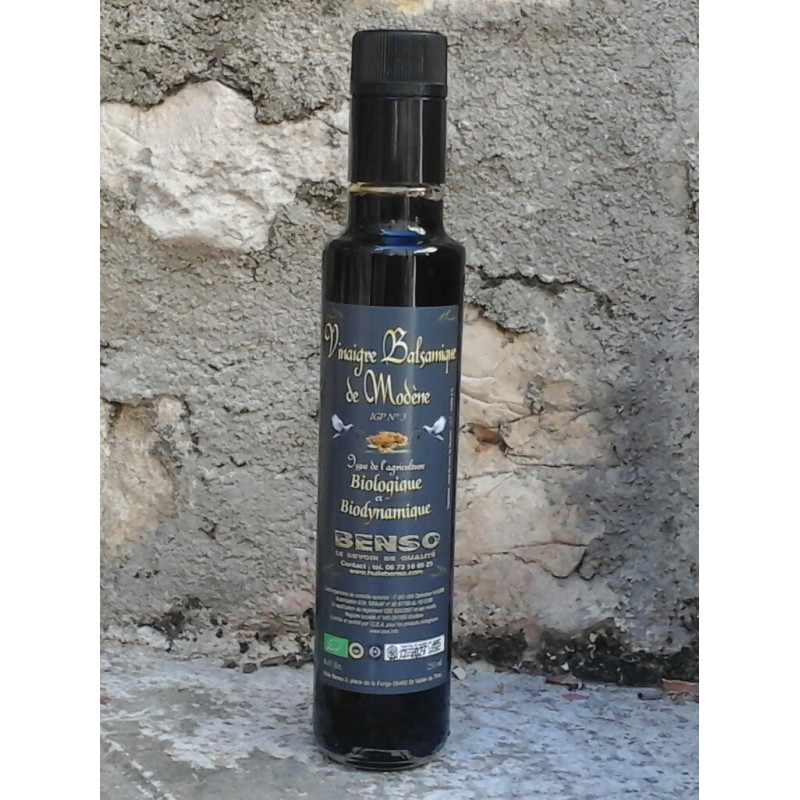




Balsamic vinegar is made from cooked grape must and not wine.
Benso balsamic vinegar is made from a blend of Lambrusco and Trebbiano PGI grapes from organic farming.
No added sugar for Benso balsamic vinegar. It is aged in oak, cherry and mulberry.
Benso Balsamic vinegar is ideal on your salads of tomatoes, corn salad, arugula, to deglaze your meat, fish, cooking with your vegetables it will give them a very pleasant taste.
250ml

Organic certification controlled by ICEA

Delivery from € 6.90 in Relais Colis

A question ? 0673189525
Several varieties of grapes can be used in the composition of the must and, according to their percentage, determine slightly different styles. The main grape variety is Trebbiano, to which Berzemino, Lambrusco, Occhio di Gatto and Spergola are added, according to the producers.
As soon as the grapes are pressed, the must is cooked for 24 to 30 hours at a temperature between 85 and 90 °, depending on the producers. This operation will concentrate the aromas and caramelize the natural sugars. The must will lose between 30 to 60% of its volume.
After decantation, this must is housed in barrels, and it is usually in early spring that begins an alcoholic fermentation that hangs in most cases at 4 degrees of alcohol acquired.
For white balsamic there is no decantation, so there is very little color, and a lot of finesse.
It is at this moment, under the effect of the bacteria contained in the battery of successive casks, that the acetic acidification of the must takes place.
During its long breeding process, the future balsamic vinegar will be transferred to a number of barrels, each of which will give it its characteristic imprint and patinaj.
These casks are classified according to a descending order of magnitude, to which correspond, in terms of the container, different wood species (oak, chestnut, cherry, ash and mulberry, with, sometimes, juniper) and, in terms of content , different reduction phases, related to the slow evaporation process.
The micro-climate of the Modena area undoubtedly plays a significant role in this process. By establishing their acetaia (vinegar plant) in seemingly absurd places, such as granaries, producers do everything to promote the most intense thermal shocks that will thus participate in the complexification of vinegar.

Balsamic vinegar is made from cooked grape must and not wine.
Benso balsamic vinegar is made from a blend of Lambrusco and Trebbiano PGI grapes from organic farming.
No added sugar for Benso balsamic vinegar. It is aged in oak, cherry and mulberry.
Benso Balsamic vinegar is ideal on your salads of tomatoes, corn salad, arugula, to deglaze your meat, fish, cooking with your vegetables it will give them a very pleasant taste.
250ml